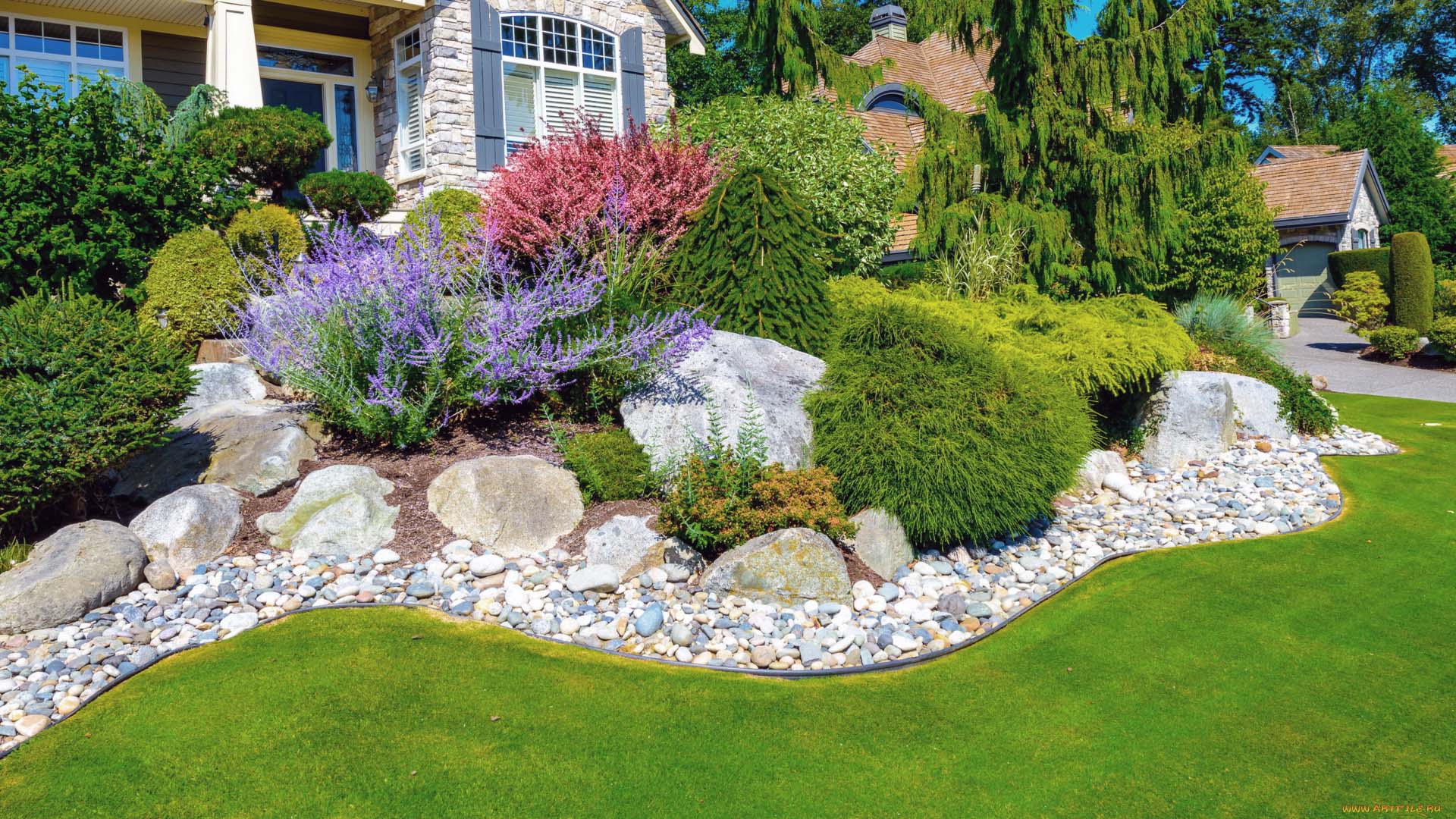
It differs from a regular flower bed or flower garden by the presence of a scattering of stones, harmoniously intertwined into the composition. The landscape design of any, even the simplest garden, is transformed if it has an alpine slide.
If you decide to improve your landscape design with an alpine slide, you should consider the following questions:
- Selecting a location for the future composition. By the way, the rock garden can be located both on a flat surface and on the slopes and hills of the garden. When choosing a location, it is worth considering the illumination of the selected area. Alpine plants do not like the scorching sun, so it is better if the light falls on them mainly in the first half of the day.
When choosing one or another area, it is worth remembering that the alpine slide must certainly fit into the general background of the garden, be “in its place”.
- So, the location of the future composition has been chosen. It is time to think about the stones. More precisely, about the base for them. Alpine plants are accustomed to mountainous terrain and stagnant moisture is as destructive for them as the scorching sun. Therefore, to begin with, it is worth taking care of the drainage layer. Gravel, brick fragments, crushed stone, expanded clay are perfect for it. A layer of thirty to forty centimeters will be enough. The base made in this way must be sprinkled with coarse-grained sand and you can proceed to laying the stones.
When choosing stones, you should be guided by the principle of unity of their color and shape. Then the resulting composition will look like a natural mountain landscape, and not a bunch of thrown boulders. Rock types for an alpine slide are varied. There is plenty to choose from. You can use tuff, granite, limestone, marble, shell rock and much more. It is better to give preference to a rock that will be “loved” by the plants planted on the alpine slide. For example, limestone is not suitable for flowers and shrubs that prefer acidic soil.
There are no rules for laying the stones themselves. The result will depend on where your imagination takes you. However, it is worth considering that an alpine garden is an imitation of a mountain slope. This means that even borders and complete symmetry are contraindicated for it.
First, lay out the large stones. Some of them should be buried in the ground. This will create a very natural effect of a mountain growing out of the ground. Smaller stones are used as a frame for the large ones.
- Now the long-awaited moment. Planting plants. Based on the color of the selected stones, the best solution would be to use silver-colored plants on a dark background, and, conversely, plants with dark and red leaves on a light background. It is equally important that the selected plants bloom gradually, replacing each other. Then the alpine slide will not lose its beauty all season.
In addition to decorative flowering plants and shrubs, you can use low-growing coniferous trees. They will keep the alpine slide looking fresh even in winter.
An alpine slide is a wonderful way to enrich landscape design. By adding a pond or embanked paths, you will get a corner of amazing beauty that will evoke a feeling of admiration in your guests.
